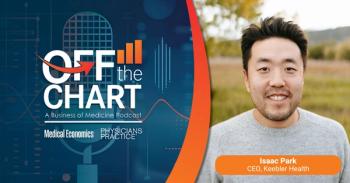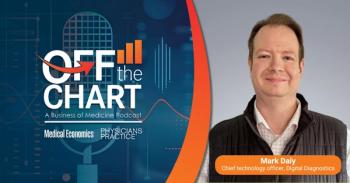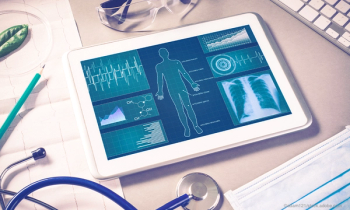
The ABCs of Tablet PCs
Why tablets are popular and what you should look for when making a purchase decision.
Sometimes when I'm describing how physicians are using tablet PCs to revolutionize the practice of medicine, I'm told that it sounds like science fiction.
I've often thought that "Star Trek's" futuristic physician, Dr. "Bones" McCoy, would have looked quite at home tapping a stylus on a tablet PC, pulling up medical records from afar, prescribing medications that are transmitted wirelessly to the pharmacist, and using the device to show the patient a video of the exploratory procedure that had just been performed.
Physicians are doing these and much more using this emerging technology for reasons core to their practice: improving patient outcomes and creating cost-saving efficiencies for practice management.
Even traditionalists who extol the virtues of writing on paper are being won over by the value of tablet PCs -- partly because the new notebooks capture so much of the natural simplicity of pen and paper.
Here's why tablets are so popular and what you should look for when making a purchase decision.
A natural evolution
With the emergence of handheld wireless devices such as the Palm Pilot, and later the pocket PC, physicians could access information anytime, from anywhere. But the small screen sizes and lack of processing power placed a limit on how much information could be displayed at one time.
A tablet PC provides wireless access to data whenever and wherever it's needed -- and it has a screen size that approximates a piece of paper.
Although the tablet PC is being used with custom applications by different industries around the world, it seems especially perfect for medicine because its design mimics the patient chart physicians have been jotting their notes in for years.
If you haven't yet seen one, the tablet PC gets its name because it resembles an electronic tablet, something that can be held in one hand, like a clipboard, as you write on its screen with your other hand using a pen-like device called a stylus.
Tablets come in a super-slim version -- referred to as a "slate" --that doesn't have a keyboard (though an auxiliary one can be plugged in). It also comes in a "convertible" model that includes a keyboard and the stylus.
These notebooks look simple, but they contain incredible computing horsepower on the hardware side, and often have the Microsoft Windows(r) XP Tablet PC Edition operating system (a superset of Windows XP Professional) on the software side -- which can either translate your handwritten notes to text instantly, or save your handwritten notes as "digital ink" files. Tablet PCs also can include voice recognition software so you can dictate to the machine and see your words appear as text, or digitally record your voice for wireless transfer to a transcription service.
Because all tablet PCs include support for wireless communication, you can seamlessly connect with your desktop machine, private practice servers, or with a medical center's electronic medical records (EMR) system -- using built-in security to protect patient privacy and data integrity.
The ability to input information with your stylus, keyboard, mouse, or through voice recognition helps you work in ways that best fit your environment and personal preferences while capturing detailed patient information. You can seamlessly access the patient's complete medical record and a world of medical references on the device, as well as search the Internet for research and other information.
Better than paper or laptop
For on-the-go data entry, the traditional pen and paper has been a tough act to beat. A physician walks into the examination room, opens the patient's chart, and makes notes throughout the interaction. But the efficiency of paper-based medical records breaks down in a hurry compared to electronic data capture.
The stacks of paper generated by traditional patient charts make it difficult to search and sort through, especially when a patient is being seen by multiple healthcare professionals. And too often, the patient record simply isn't available. In the emergency room and other hospital settings, critical decisions may need to be made long before the physical record can be pulled and delivered.
To be sure, a traditional notebook can perform many of these functions, but it lacks the natural visibility that comes from the tablet PC's form and input options. With a notebook, a physician visiting a patient in the hospital must find a flat space for the computer, or locate a chair, and try to keep the notebook from sliding off his lap. And bedside manner goes downhill as the physician breaks eye contact to concentrate on the screen and keyboard.
With a tablet PC, the physician walks into the examination room with the patient's complete medical record in the crook of one arm like a clipboard. Data gathering is completely unobtrusive, and the tablet PC, which typically has 20 to 80 gigabytes of hard drive space, can hold all the records that once were stored in a room full of filing cabinets -- and more.
Depending upon the medical practice software you choose, you will have a rich field of patient data on a screen that's about the size of a standard tablet sheet of paper. Tap your stylus on the patient's cholesterol level or blood pressure and you'll see a history of all of their previous readings.
Medical practice software designed for the tablet PC can include templates with hierarchical branching to help you aggregate data with a simple tap of the stylus, and provide checklists to help ensure you are providing best practices.
If you have access to a medical center's EMR you can bring up X-rays, CAT scans, and other images to show your patient using the stylus to circle areas of interest, or to make a drawing to show what a future surgery will do. You also can use the tablet PC to show the video taken during an endoscopy procedure, for example.
When you prescribe a medication, the tablet PC can instantly search online databases to see if the drug is reported to have side effects with medications the patient already is taking. The tablet PC also can display generic equivalents, and determine which ones are covered by the formulary of the patient's health insurer. After the prescription is written, a tap of the stylus can transmit it to any pharmacist equipped to accept digital prescriptions.
Benefiting physicians
The tablet PC helps physicians deal with three of the greatest challenges they face:
Enhancing patient outcomes -- Whether responding to an emergency room telephone call in the middle of the night, consulting with a colleague across town, or standing at a patient's bedside, the tablet PC helps physicians access the information they need. And customizable templates and checklists help ensure that best practices are followed.
Remaining efficient across their highly mobile workday -- The physician is the ultimate mobile information worker. Some studies have found that about 40 percent of the average physician's time is wasted -- much of this caused by the lack of timely access to information causing duplicate efforts and other inefficiencies. The tablet PC lets you stay connected to all the information you need.
Minimizing time spent on documentation -- Medical practice applications created specifically for use on the tablet PC make it simple to point and click your way through a patient interaction, using logical hierarchies and decision trees to document the patient encounter. The physician can augment the information, entering notes with the stylus or keyboard, or through dictation. The result: documentation is done in real time -- not stacked up to be entered later. In many cases, transcription costs can be dramatically reduced or eliminated entirely. Earlier patient records, lab reports, and other documents arriving on paper can be scanned into the system.
Choosing a tablet PC
If you decide to purchase a tablet PC, some of the basic questions you'll face include:
Which design? -- When looking for a tablet PC the first choice will be whether to go with a slate or a convertible. Some physicians prefer the slimmer profile and lighter weight of the slate -- especially those in a clinical environment, who spend a lot of time on the move. Others prefer the convertible because they like the convenience of the built-in keyboard. If you spend more time in your office than in the clinic, the convertible might be the way to go.
Which processor? -- As soon as you walk into a store or begin searching the Web, you'll be faced with tablet PCs using central processing units from different manufacturers, running at different speeds. Fortunately processor speeds are already impressive. Most tablet PCs provide clock speeds approaching or surpassing 1 GHz (gigahertz), which is more than adequate to handle most any application you'll be using in clinical practice.
What's the battery life? -- As long as pricing doesn't become an issue, you will likely want to get as much battery life as you can. Think through your day and determine the maximum battery life you will need. It will be listed as a specification, so it is easy to check. Fortunately, battery life is being expanded significantly by a new generation of processors built specifically to run mobile devices while conserving draw on the battery. Chip manufacturers including Intel, Advanced Micro Devices (AMD), and Transmeta have chip-based technology that significantly enhances battery life.
How big is the hard drive? -- Hard drives tend to range from 20 to 80 gigabytes, providing plenty of room for the operating system, medical practice applications, medical dictionaries, and other references. It's good to purchase toward the higher end on hard drives, simply because they usually don't cost that much more, and it is better to have too much storage space than not enough.
The good news is that whichever tablet PC you might choose, it should open the door to a wonderfully new way of practicing medicine.
Bill Crounse, MD, is global healthcare industry manager for the Healthcare and Life Sciences Industry Solutions Group at Microsoft Corp. He can be reached at
This article originally appeared in the May 2004 issue of Physicians Practice.
Success Story
Starting our own practice from scratch five years ago was definitely a challenge. Children First Pediatrics sees an average of 100 to 120 patients per day with four physicians and four nurses in our single San Antonio location.
To streamline our work, we purchased Charting Plus, an EMR from MediNotes Corporation, to chart our patient's medical records electronically instead of using paper charts. Most of the clinicians in the office choose to use Charting Plus on a pen-based tablet PC to enter data during the office visit.
A tablet PC is lightweight and portable just like a paper chart. We can enter data easily and quickly right at the point-of-care. Just by touching a screen, our providers get immediate, clinical alerts based on the documentation entered. They can instantly view a patient's medical history and monitor any potential drug interactions.
The nurses are able to enter vaccines much faster than if they were writing. We probably save between five and 10 minutes per patient by entering vaccines electronically. In the long run, I estimate that we will save more because we can now print vaccine records directly without pulling paper charts. We are also saving approximately 10 minutes per chart when we need lab data and patient information.
When you calculate this for every single chart-pull, it's clear that the minutes saved add up quickly.
-- Juan Ferreris, MD, Children First Pediatrics, San Antonio, Texas
Newsletter
Optimize your practice with the Physicians Practice newsletter, offering management pearls, leadership tips, and business strategies tailored for practice administrators and physicians of any specialty.








